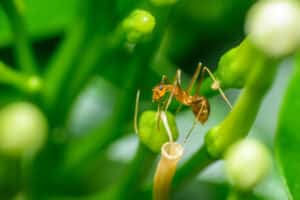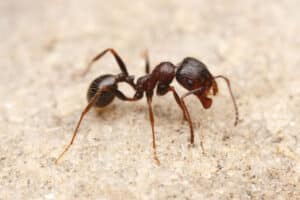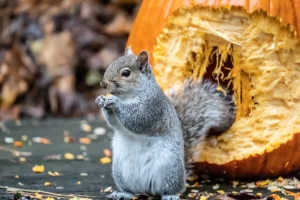Home / Blog / Ants / A Guide to Pharaoh Ants
A Guide to Pharaoh Ants
Get upto $350 Off

Scientifically reviewed by Daniel Baldwin, BCE, CCFS, CP-FS
-Published on May 16, 2023
-Updated on July 13, 2023
Found throughout the U.S., pharaoh ants can build large colonies and spread more than a dozen disease pathogens, not to mention overtaking households in the blink of an eye. Use this guide to learn everything you need to know about this common pest and what to do in the event of an infestation.
What are pharaoh ants?
Pharaoh ants are an ant species located in virtually every area of the world, including Europe, the Americas, Australasia, and Southeast Asia. Pharaoh ants are a common household ant and one of the most challenging to control and manage.
The full pharaoh ant colony includes queens, males, workers, and those in the immature ant stages, including eggs, larvae, pre-pupae, and pupae. They typically build their nests in warm and humid spaces near food and water sources, such as inside walls, cabinets, and underneath floorboards. They’ve also been known to establish colonies in unconventional places within the home, such as between folded sheets, between the pages of stationary, in the mechanical areas of appliances, and even piles of trash.
Do pharaoh ants bite?
While pharaoh ants have mouths and can technically bite, they are not known for biting humans. They also have tiny stingers but seldom use them on people. If stung or bitten by a pharaoh ant, you likely won’t even feel it.
What are pharaoh ants attracted to?
Like most ant species, pharaoh ants need easy access to food, water, and shelter. The easier access they have to a steady food supply, the more likely they will invade a space. Pharaoh ants typically try to find areas humans rarely visit to establish their colony.
What do pharaoh ants eat?
Pharaoh ants can feed on many household items, including sweets, oils, and proteins. They will also eat other dead insects. They prefer sugary foods and liquids and are quickly drawn to food debris, such as spills, crumbs, trash, or open food containers. Pharaoh ants don’t eat wood but can cause significant damage if they set up their colonies in wooden structures within the home.
What do pharaoh ants look like?
Pharaoh ants are a tiny species of ant, averaging around 2 mm in length. Their bodies run from light yellow to red, often with red or black abdomens. The queens are generally a darker color than worker ants. Pharaoh ants don’t develop wings or swarm as some ant species do. Instead, colonies will bud by creating a new colony with a new queen nearby.

Pharaoh ants vs. sugar ants
Another common ant species pharaoh ants are commonly confused with is sugar ants, also known as Argentine ants. The biggest difference between these species is that Argentine ants can thrive outdoors and indoors, whereas pharaoh ants prefer living indoors.

Pharaoh ants vs. harvester ants
Harvester ants are a more aggressive ant species and got their name for their habit of harvesting and collecting seeds as their primary food source. Unlike pharaoh ants, they set up nests outdoors and remove all the vegetation around their nest area, causing large bare spots in lawns.

How to spot a pharaoh ant nest
It can be hard to identify if you have a pharaoh ant infestation based on trying to locate their nest. Pharaoh ant nests are typically well-hidden inside walls, baseboards, or areas humans can’t easily access. You’re far more likely to see pharaoh ants out as they’re looking for food or water to bring back to their colony.
How to get rid of pharaoh ants
There are a few things you can do around the house to try and prevent or get rid of pharaoh ants naturally:
- Manage trash: Get a trash can with a sealing lid and take out your kitchen garbage daily. Keep your trash can stored somewhere other than your pantry and away from your dry goods.
- Clean up spills: Clean up food spills and messes as soon as possible. Don’t leave any crumbs or sticky spots behind.
- Seal food: Store dry goods and pantry items in tight-sealing containers that ants cannot access.
- Clean thoroughly: Around once a month, deep clean your pantry, appliances, and kitchen storage with a household cleaner and warm water.
Pest control services
The best way to eliminate a pharaoh ant infestation is to hire a professional pest control service like Hawx Pest Control. Our team will create a custom treatment plan and use a three-fold process, high-quality tools, and the latest products to address infestations thoroughly. Call us today for a free estimate to get your pest problem under control.
Related Articles
Visit our blog to learn more.
→













